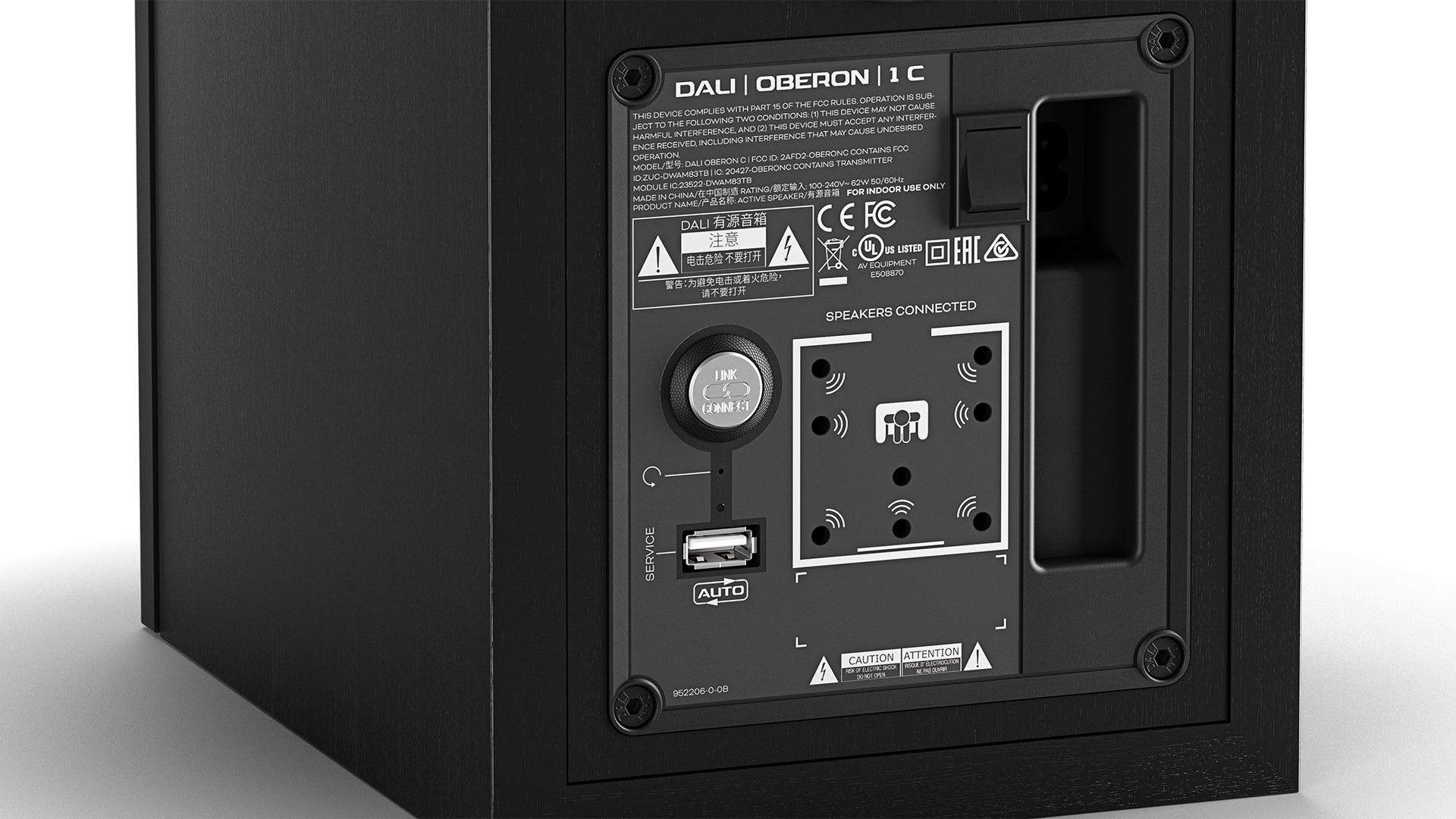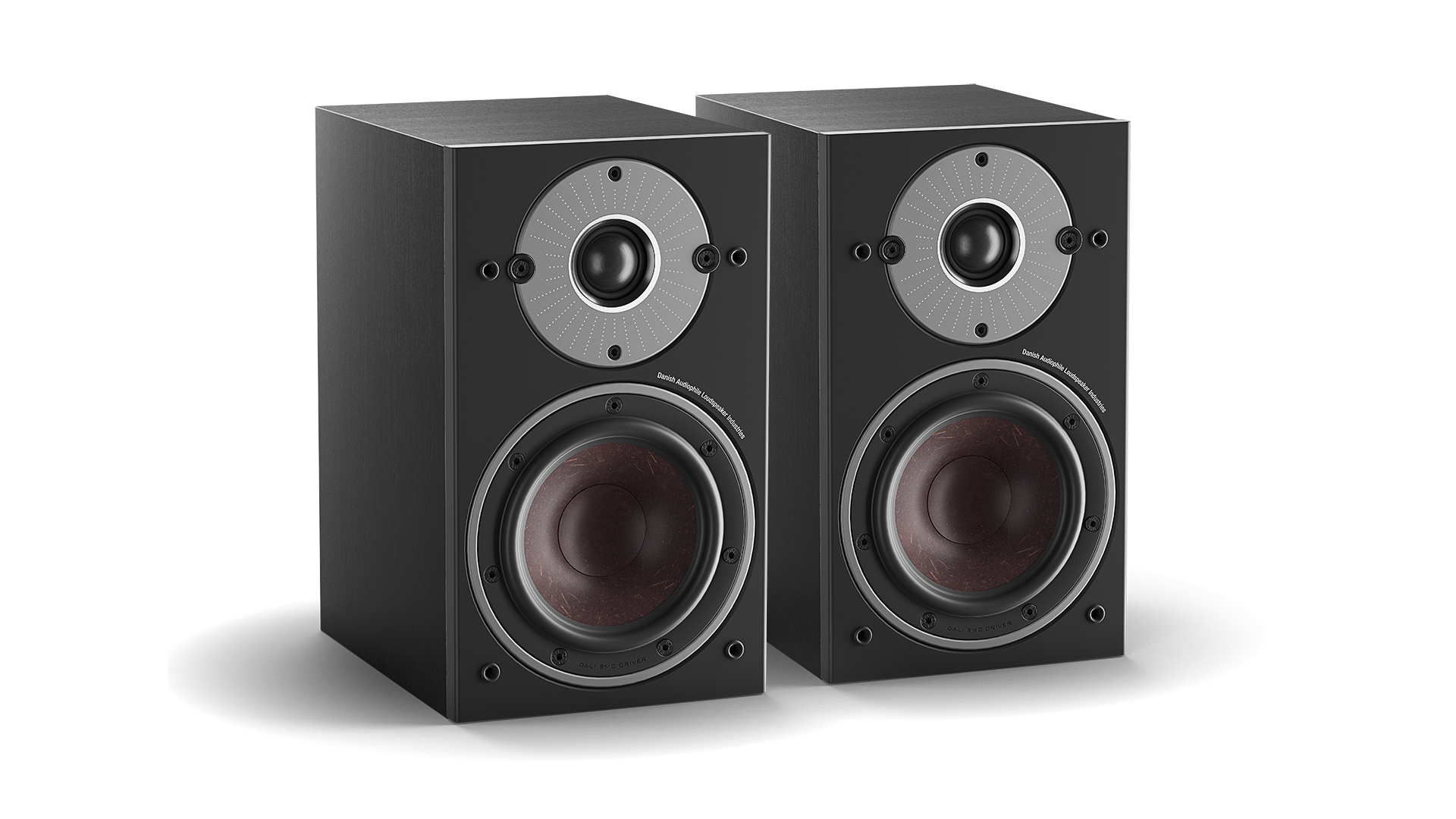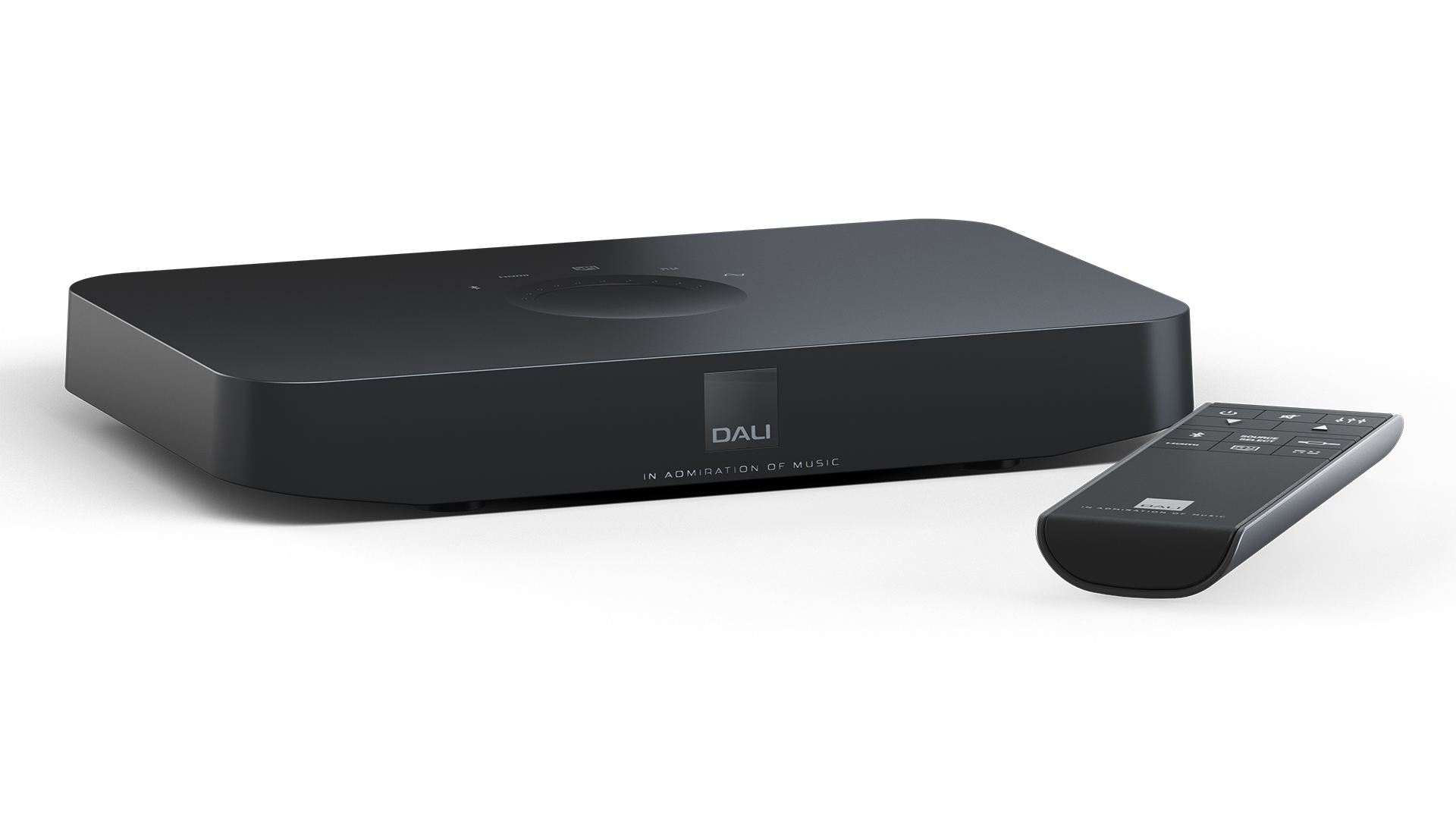What Hi-Fi? Verdict
Whichever connectivity hub you choose, the Oberon 1 C package promises sonic satisfaction in spades
Pros
- +
Detailed, musical sound
- +
Superb midrange clarity
- +
Two Sound Hub options
Cons
- -
Not the last word in authority
- -
Slight lack of bass depth
Why you can trust What Hi-Fi?
The shared pursuit of love and happiness aside, not everyone is after the same thing – as Dali acknowledges in the design of its latest stereo speaker system, the Oberon 1 C. Audio systems, whether they are modest all-in-one micros or more ambitious active speaker types, often adopt a one-size-fits-all model – it’s part of their convenient, fuss-free selling point, after all. However, the Oberon 1 C have been designed to appeal to more than one kind of buyer and set-up.
Features

This standmounter package belongs to a three-strong active speaker system series, which also incorporates the 7 C floorstanders and On-Wall C wall-mounted speaker and is based on the Danish company’s Oberon passive speaker range. As Dali's most affordable active range, they sit beneath the Rubicon C and Callisto C series, which are themselves based on passive speaker ranges.
However, the Oberon C models are a slightly different proposition to their active system siblings, largely due to their more accessible nature. While the brains of the Rubicon C and Callisto C speakers lie in a separate wireless network preamplifier called the Sound Hub, the Oberon C package introduces a smaller, modified version of this box, the Sound Hub Compact.

Bluetooth aptX HD
Power 4x 50W Class D amps
Finishes x4
Dimensions (hwd) 27 x 16 x 23cm
Weight 4.4kg
This box is packaged with the Oberon 1 C, but you can choose to have the original Sound Hub instead for a £250 premium. Going down the hub route, rather than packing all the connectivity inside the speaker cabinets, allows Dali to offer upgradeable boxes in the future. From an aesthetic point of view, it also gives owners the option to keep cables from connected sources away from speakers. But why two hubs? Dali feels that this price point makes the Oberon 1 C (and 7 C) an alternative to a soundbar, for those after a higher-performing TV-based system with a more convincing stereo soundstage than offered by a single bar.
The Sound Hub Compact’s connectivity certainly reflects those ambitions. There’s an HDMI ARC socket providing one means of connecting to a TV, allowing the TV remote to control the Oberon 1 C’s volume adjustments and, as the hub also supports auto input switching, largely negating the need for the system’s provided remote.
Optical inputs provide another, with one geared towards TV connectivity so that the Sound Hub can automatically power up when the TV is turned on. There's also aptX HD Bluetooth – handy for wirelessly playing music from a phone or other Bluetooth-toting audio source – plus a pair of RCA inputs, a subwoofer output and a USB service port.
What is missing, compared with the full Sound Hub, is the BluOS streaming module, which offers DLNA playback, Spotify Connect, Tidal Connect and built-in access to other streaming services, such as Amazon Music, Qobuz and Deezer. The Sound Hub Compact’s lack of BluOS support and general network access means that both multi-room functionality with other BluOS devices and MQA file support aren’t available – and for some this will be an issue. The Sound Hub also features a coaxial input and preamp output, which the compact version doesn’t.
The latest hi-fi, home cinema and tech news, reviews, buying advice and deals, direct to your inbox.
But for those who wish to keep their set-up simple, or who don’t rely upon music streaming services, the Sound Hub Compact may be all they need. Those after an active stereo system but have a bigger budget or more ambitious performance requirements should be aware that the Sound Hub Compact is also compatible with Dali's Rubicon C and Callisto C active speakers, too.
Build

Dali has reduced the size of the hub, mostly in terms of its height, so that it can more easily be tucked away on a rack. Whereas the Sound Hub’s size is comparable to a set-top box, the Sound Hub Compact is more akin to a wi-fi router, with a simple half-circle arrangement of LED lights that denote input selection.
We test both hubs with the Oberon 1 C, but whichever you choose, one of their design’s biggest blessings is their wireless transmission to speakers. The hub sends music to the Oberon 1 C over a proprietary 30-bit wireless protocol, with transmission latency from input to speaker claimed to be less than 15mS.
Upon receipt of the signal from the hub, the wireless receiver modules in the speakers detect which channel data (left or right) to play, depending on the channel assigned to each speaker during set-up. The correct channel data is passed at 24-bit/96kHz resolution to the DSP-based equalisation and crossover filter electronics. During our testing, we don’t experience any connection or latency issues and the experience is solid.
The speakers are largely unchanged from the passive Oberon 1, which in our review we said were “solid and nicely made” and “compact enough to fit unobtrusively into most rooms”. There are still four finish options – black ash, matte white, dark walnut and light oak – but, as with the Oberon 1, the biggest aesthetic statement here is provided by the mahogany coloured 13cm wood fibre mid/bass cone, which is used in conjunction with Dali’s Soft Magnet Compound (SMC) technology and sits below the 29mm soft dome tweeter in the familiar Dali arrangement. Each unit, this time though, is fed by a dedicated 50W Class D amplifier.
The Oberon 1 C’s compact dimensions mean they should be easy to house, whether flanking a TV on a rack or pair of stands (such as Dali’s own Connect Stand E-600) or alternatively wall-mounted via the speakers’ rear-panel keyhole slots. The Dalis sound pretty balanced up against a wall, despite the use of a rear reflex port, but we find they perform best when placed around 20cm to 30cm away from one, facing straight ahead. This way, the Oberon 1 C display familiar sonic behaviour – clear, articulate, fast and notably superb with vocals.
Sound

We connect the Oberon 1 C to the full Sound Hub – a pairing costing £1449 – and stream Tom Odell's Heal over Tidal Connect. The vocal-led track comes through the speakers with tangible clarity and the kind of levels of insight you can feel. Odell’s delivery is full of tenderness and the Dali is sympathetic to that, while also keeping a firm hand on the accompanying keys. This midrange insight was one of the passive Oberon 1’s highlights, and something the addition of wireless active operation hasn't changed.
There is depth and obvious layering to what is generally an open and precise soundstage – and that still rings true with denser compositions. We play The Theory Of Everything by Jóhann Jóhannsson and the Dalis display a tight organisation in their presentation of the piano, string and percussion instrumental, while also proving astute in capturing the dynamic surges of the string ensemble.
We move to the Love Theme From The Godfather by Nino Rota and the Dalis not only have plenty of insight – the mandolin is unmistakable, the accordion textured – but they also communicate the dense and crude nature of the production. It grasps what scale there is to the strings and keeps things tidy as the piece reaches its climax.
This organisation, combined with dynamic aptitude and agility, makes for a rhythmically engaging listen. The Oberon 1 C work musically, capturing the experimentalism at the core of Oneohtrix Point Never's Long Road Home; all the musical strands are held together well, without ever sounding messy.

The Dalis have a good go at rip-roaring through pg.lost's Suffering – there’s more than a hint of drive and weight behind the crashing electric guitars and walloping drums. However, as with the Oberon 1, you don’t get the authority or bass volume and depth you would from a physically larger pair of speakers – something that those who need to fill a big room should be aware of.
We replace the Sound Hub with the Compact version and, connecting it to the Naim ND 555/555 PS DR music streamer via RCA, are presented with the same admirable strengths and more, which is hardly surprising considering the Naim’s high-end calibre and the wired connection.
Streaming from our Samsung Galaxy S21 phone to the Sound Hub Compact over Bluetooth (in aptX form) offers less clarity, openness and refinement than that delivered by the Sound Hub’s BluOS streaming – and certainly by the Sound Hub Compact and Naim streamer pairing, as is to be expected. But, though comparatively cruder, the Dali’s detailed, organised and musical presentation is still prevalent.
Verdict
Active streaming systems are becoming increasingly common in this convenience-craving world, and the Dali Oberon 1 C are among the best examples we’ve seen at this level.
Whether you stick with the bundled TV-friendly Sound Hub Compact or upgrade to the full streaming-savvy Sound Hub, this package will make the most of the features on offer with an easy-to-use operation and a musical, clear sound. As affordable stereo speaker systems go, this one’s satisfyingly complete.
SCORES
- Sound 5
- Features 5
- Build 5
MORE:
Read our guide to the best active speakers
Read our Dali Oberon 1 review
What Hi-Fi?, founded in 1976, is the world's leading independent guide to buying and owning hi-fi and home entertainment products. Our comprehensive tests help you buy the very best for your money, with our advice sections giving you step-by-step information on how to get even more from your music and movies. Everything is tested by our dedicated team of in-house reviewers in our custom-built test rooms in London, Reading and Bath. Our coveted five-star rating and Awards are recognised all over the world as the ultimate seal of approval, so you can buy with absolute confidence.

